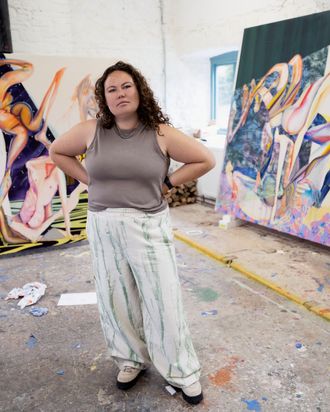
Christina Quarles Photo: Tara Darby. ©Christina Quarles. Courtesy the artist and Hauser & Wirth.
Lately, Christina Quarles has been thinking a lot about intimacy. “You can be more complicated and contradictory when you’re not trying to get people to understand the shorthand version of you,” says the Los Angeles–based artist. “You can just be in your body.”
Being in your body is the central theme of Quarles’s fantastical, prismatic paintings, in which racially ambiguous figures twirl into impossible positions. Torsos and limbs converge to form otherworldly, composite creatures that are orange, magenta, navy blue, and brown. Channeling the expressive intensity of Frida Kahlo’s self-portraits with the contorted physicality of Egon Schiele’s paintings, the figures in Quarles’s paintings twist with pain and pleasure.
“There’s a back-and-forth between a plan and a mistake,” she says of her practice. “Painting moves from being a purely physical gesture to being about digital errors.” In the art world, she’s experienced a meteoric rise to stardom: In April, she debuted at the Venice Biennale. The following month, one of her paintings sold for a record $4.5 million at Sotheby’s. And on September 8, she’ll have her debut show in New York at megagallery Hauser & Wirth. That’s before her inclusion in the Biennale de Lyon, starting at the end of the month. Quarles is part of a wave of young Black figurative artists including Jordan Casteel and Tschabalala Self whose rapid ascendance has been exciting to witness — but is also undeniably fraught, as when their work is sold at auction and they garner headlines and publicity but none of the profits.
Raised in Chicago, Quarles became a graphic designer and M.F.A. student in Yale’s prestigious painting program, before pursuing her art practice professionally. She spoke with the Cut about becoming a mother, measuring success in the art market, and traveling around Europe with her unconventional queer family.
Same Shit, Diff’rent Day (2022) Photo: Thomas Barratt. ©Christina Quarles. Courtesy the artist, Hauser & Wirth, and Pilar Corrias, London.
This summer you were at a residency in Somerset, in the English countryside. How did that change in setting impact your practice, especially your color palette?
It was really wild to be in Somerset, because there’s no air pollution. The blues of the skies and the greens of all the plants were so vibrant and crisp. I made paintings there that were very saturated in color. And the sun set around 10 p.m., so I had an extra half-day to paint. There were these crazy-long periods of twilight blue, whereas in L.A., everything feels very sun bleached. It’s this hot, filtered light. L.A. skies are almost a white-blue, and we have these insane sunsets of hot pinks and oranges.
How has it been traveling outside the U.S. for the first time in years?
I was raised feeling like it’s a benefit to be around as many different people as possible, because everyone’s super-neurotic and messed up, so if you’re around enough different kinds of people, you can kind of piece together a whole sense of the world.
In Europe, I’ve always found less of a willingness to talk about race. There’s this idea that it’s an American problem, not a European problem. People will talk about class there, but be a little bit confused about how to talk about race.
In religious countries, like Italy, there’s also always a question of: How gay do you want to be? It’s always a coming-out process — whether it’s with my race or my sexuality. While we were traveling, we navigated a gender reversal, where our hired nanny and chef and housekeeper, who is also a friend, is a man, and my wife and I are creatives. Everyone at [restaurants] thought he was the one to put the check in front of.
In 24 Days Tha Sun’ll Set at 7pm (2022) Photo: Fredrik Nilsen. ©Christina Quarles. Courtesy the artist, Hauser & Wirth, and Pilar Corrias, London.
You’ve talked about how you don’t fit neatly into categories. Your mother is white and your father is Trinidadian. How does the idea of having multiple identities manifest in your art?
I was born in 1985, when my parents couldn’t put more than one race on my birth certificate. And I was born in Chicago — it wasn’t some small town.
I’m always defined by my environment; it contrasts what I am. I’m very often misread as white by white people. So if I’m in a room of just white people, there are things that are said without the awareness that there is a person of color in the room. But then if I’m in a space that is carved out for Black art students, like at Yale, that’s when I feel the most white, like I shouldn’t be in the room. My sense of self is usually undermined by community rather than defined by it.
In my paintings, environments that give context to figures often slice or cut, fragmenting their bodies. There is a tension between boundary and edge and definition and legibility. I play with the desire to pin down a narrative and to complete an image. Skin color is more to define a sense of heat or coldness or slick or soft; it’s used for the literal feeling of flesh rather than the observation of it. I create images that remind us that reality is constructed.
Tell me about your home-studio setup in Los Angeles.
I live in Altadena; it’s kind of like the country of L.A. For most of the pandemic, I worked in a converted garage behind my house that is less than 400 square feet. It’s so close I could see my family in the kitchen eating lunch while I painted. It became a multiuse space that was also a guesthouse and temporary gym. I would make a painting and then have to turn it around and ship it out of the studio. In those paintings, figures butt up against the frame, which are quite physically confined spaces.
I always keep a photo of my great-grandfather in my studio, wherever I go. I think most artists have hoarder tendencies. I bring oddball things into my studio that make me laugh, like this dollar-store mug that says “Diva”— it’s literally a Diva cup — or really realistic fake oranges or this funny thrifted vase that looks like a flower with a butthole. I’m building a new studio near the horse stables above the property.
Try n’ Pull tha Rains in on Me (2022) Photo: Thomas Barratt. ©Christina Quarles. Courtesy the artist, Hauser & Wirth, and Pilar Corrias, London.
Your practice balances planned compositions and free gestures. How much are you executing on a preplanned vision versus improvising as you go?
I have a catalog of things that are interesting to me: patterns, environments, memories of a figure. Recently it’s been plywood and wood-grain patterns, moire silk from the 1700s. Also paper marbling, which has trippy patterns.
Going into a new painting, I don’t have a sketch. I’ll lay down a gestural mark and then improvise. Painting is very physical. Maybe I paint a line that could be a figure’s back, but it actually becomes an arm. Maybe I stumble while I’m making it and it gets a little crooked. Or one paint color bleeds into another and makes a third color. Or a drip happens. The drip might actually be an interesting break, a point where I can split the face or have a foot butt up against that line.
Then I’ll photograph the work, bring it into my computer, and start the whole process of making digital stencils with Adobe Illustrator. I know Illustrator really well from working as a graphic designer, when I used to design wedding invitations.
A lot of people have a visceral response to the figures in your paintings. The way they writhe and contort into impossible positions is at once moving and disturbing. What kind of corporeal experience are you interested in capturing?
The work is an exploration of what it is to be in your body. There are paintings that I see as portraits, not of looking at a body but of being in your body looking out on the world. I’m more interested in the feeling of being in a racialized or gendered body, and less interested in what it is to look at a racialized or gendered body.
Caught Up (2021) Photo: Fredrik Nilsen. ©Christina Quarles. Courtesy the artist, Hauser & Wirth, and Pilar Corrias, London.
All of us are at this constant disadvantage in that we can see everybody else as these faces, because you’re usually making eye contact, but it’s the part of ourselves that we don’t get to see all of the time. What you do see are your hands and your feet and your arms and legs. So you’re this fragmented jumble in any given social situation, while you’re interacting with these seemingly whole people. The need for intimacy is to have times where you don’t have to try to be just a face. In paintings, I use the hands and feet, more so than faces, to really articulate expression.
When you’re working, and you’re getting deep into a painting, how do you feel in your body?
For an 86-inch painting, I get on my tippy-toes to make the arch of an arm. That’s my literal wingspan, the highest I can do as a five-foot-four person with a brush. It’s the rotation of my shoulder. I go from shoulder scale to finger scale when I’m drawing on a track pad.
How has having a baby with your wife changed your work?
With a baby, all you do is look at a face. All day long. You’re no longer physically important, you’re just taking care of this little face. I think the work [in the Hauser & Wirth show] has more faces, for sure. When you have a kid, you’re so strapped for time that you’re trying to find ways to be more efficient. Like, should I get a studio assistant? I decided not to. There’s this idea that success or progress is marked by things getting more expansive — and I think that is actually a Western or capitalist way of thinking.
With me and my wife, it wasn’t clear which one of us would carry the child, would have the pregnancy. We both have creative jobs where we’re working all the time and none of the time — there was less of a given of who would take on domestic responsibility. We thought about how we can do this in a way that works for our lifestyle, where there’s a sense of creative fulfillment for everybody. It’s something that is weirdly easier when you’re not automatically in gender roles that are reinforced by the culture.
Right now, I’m at this crossroads of optimism and pessimism. There’s been no real reckoning with all the death [during the pandemic] and all the violence. There are things, culturally, that we need to grieve. I feel like I’m in this very pessimistic state about the world and humanity, but at the same time I just had a baby. As a parent, you have to believe that, at a minimum, things will stay the same but ideally get better for your child.
In May, your painting Night Fell Upon Us (Up on Us) sold for a record-setting $4.5 million. Many artists and gallerists worry about their art being flipped at auction; when an artwork goes to the highest bidder rather than a trusted collector who has shown interest in the artist’s long-term career, the risk is that it’ll be hidden away in a storage facility rather than loaned to public museums for exhibition. But high auction sales can also draw a lot of attention to your work. What was it like for you to find out your painting sold for so much?
Somebody texted me: “OMG your work just went for …” and then I saw a dollar sign, a 4, and then 562. I was like, “Oh the work went for $4,562 at auction, that seems pretty disappointing.” Then I realized it was 4 million dollars. That just shows you how, as an artist, you’re always in disbelief. The marketplace is abstract. I’ve seen my work be valued at literally nothing, like I can’t give it away. And I’ve been excited to make $4,000 for a painting. The value shifts dramatically.
You’re told it’s a bad thing if your work goes to auction because it creates such a frenzy. But then you’re also told it’s a good thing. And then monetarily, you’re like: I make nothing either way. You kind of have to file it away in a different part of your brain — and it cannot be what motivates or intimidates the process.
"artist" - Google News
September 08, 2022 at 06:00PM
https://ift.tt/PYNTHJA
Artist Christina Quarles on Her Upcoming Hauser & Wirth Show - The Cut
"artist" - Google News
https://ift.tt/ZNlrHpt
Bagikan Berita Ini
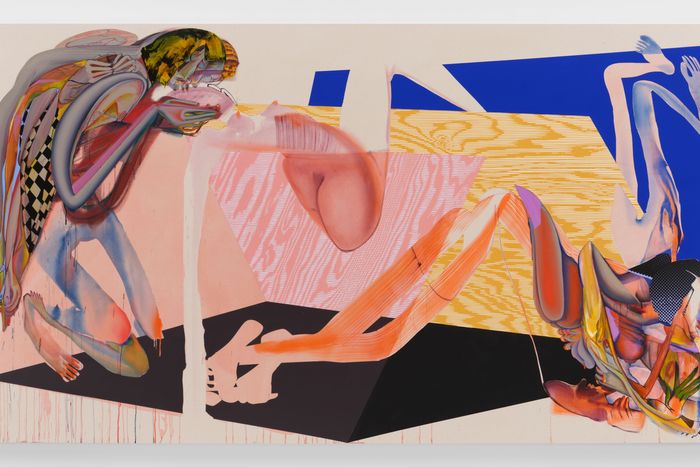
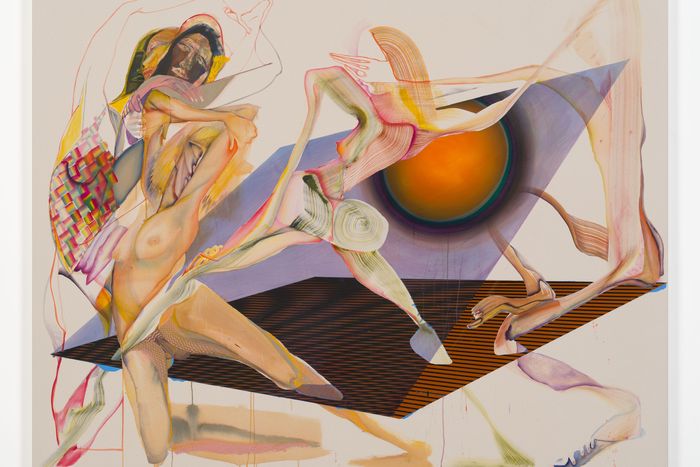
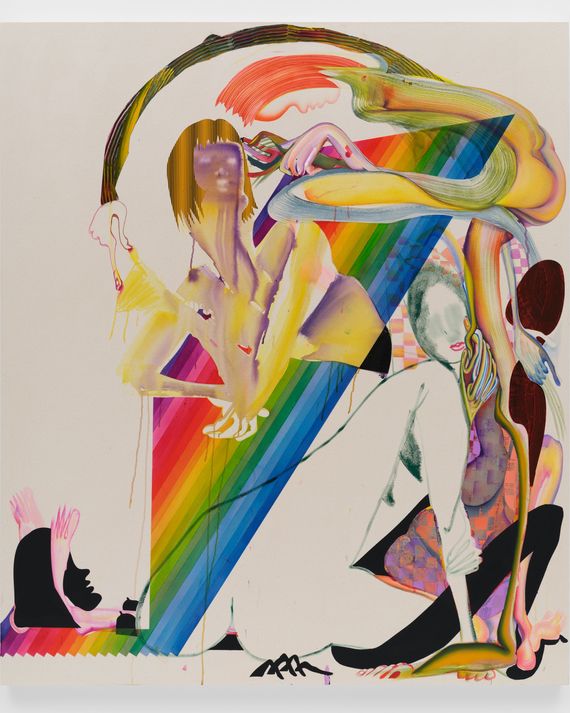
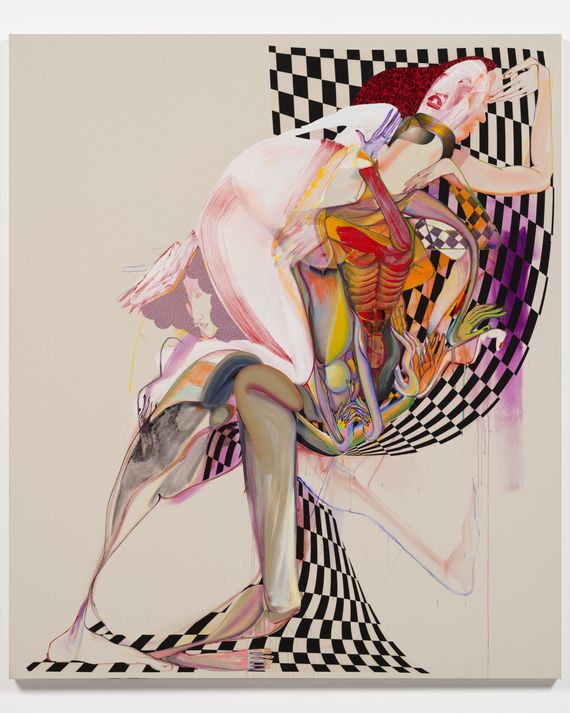














0 Response to "Artist Christina Quarles on Her Upcoming Hauser & Wirth Show - The Cut"
Post a Comment